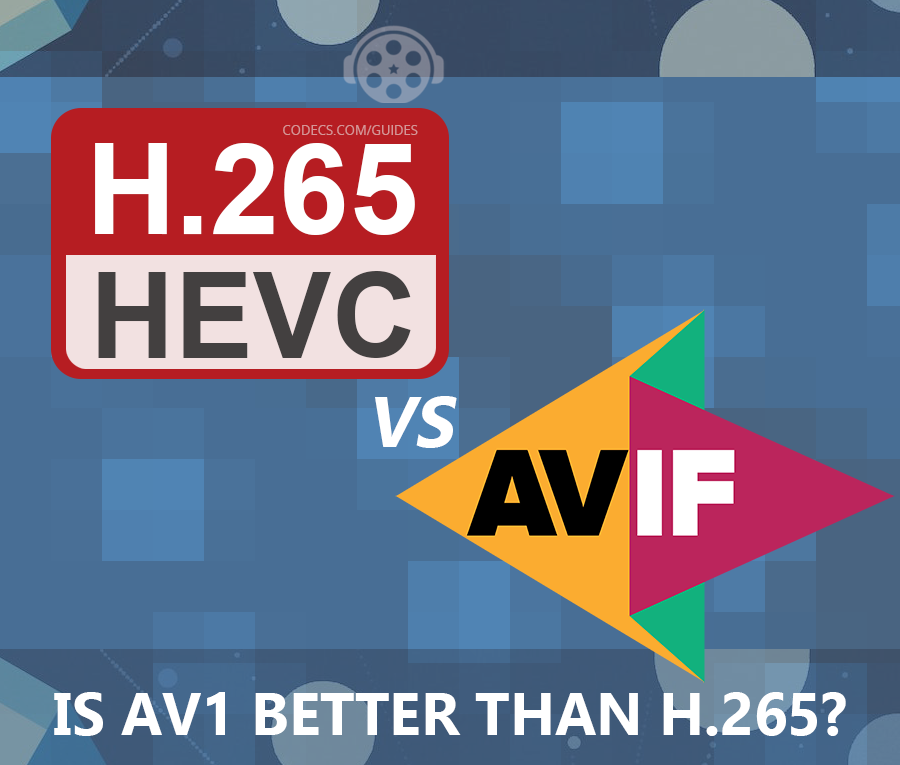Is AV1 Better Than H.265?
We're continuing the series “Is X Better Than Y?” with a look at two of the most popular video codecs: AV1 and H.265 (HEVC).
As video streaming continues to dominate how we consume media, choosing the right codec can have a big impact on quality, efficiency, and cost.
So, let's explore whether AV1 is better than H.265 and see how they stack up against each other in various aspects.
What Are AV1 and H.265?
Before diving into the specifics, let’s briefly define the two codecs:
AV1 (AOMedia Video 1) is a relatively new video codec developed by the Alliance for Open Media, a consortium that includes heavyweights like Google, Apple, Netflix, Amazon, and Microsoft. AV1 is designed to be open-source and royalty-free, with a focus on high compression efficiency.
H.265 (High Efficiency Video Coding or HEVC) is the successor to H.264, developed by the Joint Collaborative Team on Video Coding (JCT-VC). It offers substantial improvements over H.264 in terms of compression, enabling higher-quality video at lower bitrates.
Compression Efficiency
AV1 is often praised for its exceptional compression efficiency. It can provide 20-30% better compression than H.265 for the same video quality, meaning smaller file sizes and less bandwidth usage. This efficiency makes AV1 particularly appealing for streaming services, where reducing data usage without compromising quality is crucial.
H.265, while not as efficient as AV1, still offers significant improvements over its predecessor, H.264, by cutting down file sizes by about 50% compared to H.264. Although it requires more bandwidth than AV1 for equivalent quality, it still performs well, especially at higher bitrates.
Video Quality
When it comes to visual quality, AV1 shines with its ability to maintain high-quality images even at low bitrates. It uses advanced features like adaptive quantization and temporal filtering to enhance quality, particularly in complex scenes. This makes AV1 an excellent choice for streaming high-resolution content like 4K and HDR.
H.265 also delivers impressive video quality, supporting up to 8K resolution, and is widely used in broadcasting and physical media formats like UHD Blu-ray discs. At higher bitrates, H.265 competes closely with AV1, but its efficiency can drop at lower bitrates compared to AV1.
Decoding and Encoding Performance
One of the drawbacks of AV1 is its computational intensity during encoding. AV1 requires more processing power and time, making it less practical for real-time applications like live streaming. However, the situation is improving as hardware support for AV1 decoding becomes more common in new devices, offering smoother playback experiences.
H.265 generally has faster encoding times, making it more suitable for real-time encoding scenarios. It is widely supported across a range of modern devices, ensuring reliable playback. The extensive hardware support for H.265 means it can efficiently handle real-time encoding and decoding, a critical factor in many applications.
Compatibility and Support
AV1 is gaining traction thanks to support from major tech companies like Google and Netflix. Many modern web browsers, including Chrome, Firefox, and Edge, have started to support AV1, making it increasingly viable for web-based video streaming. However, older devices may not support AV1 yet, which can limit its current reach.
In contrast, H.265 has been around longer and enjoys widespread compatibility across various devices, including TVs, smartphones, and streaming devices. Its mature support infrastructure means that it is more likely to be compatible with older hardware, providing a smoother transition for users and companies alike.
Licensing and Cost
One of AV1's most significant advantages is its royalty-free nature. There are no licensing fees for using AV1, which can significantly reduce costs for developers and companies. This open-source approach encourages broader adoption, particularly among smaller companies and developers seeking cost-effective solutions.
H.265, however, is subject to licensing fees, which can be expensive for companies integrating the codec into their products. These fees have sometimes hindered its wider adoption, particularly in open-source projects and among smaller companies that may struggle with the costs.
Use Cases
AV1 is ideal for streaming platforms where bandwidth efficiency is a priority, such as YouTube or Netflix. Its ability to deliver high-quality video at lower bitrates makes it a strong candidate for future-proofing products and services that rely on efficient streaming.
H.265, with its broader compatibility and real-time encoding capabilities, is more practical for current use cases where hardware support and existing infrastructure are vital. It is widely used in broadcasting, physical media, and applications where real-time performance is essential.
So, to summarize, is AV1 better than H.265?
The answer largely depends on your specific needs:
Choose AV1 if you prioritize compression efficiency, lower bandwidth usage, and want a royalty-free solution for future-forward projects. It’s especially appealing if you’re looking to reduce costs and take advantage of emerging support across new devices and platforms.
Opt for H.265 if you need established compatibility across a broad range of devices and applications that require real-time performance. It’s the better choice for scenarios where existing infrastructure relies on proven, widely-supported technology.













